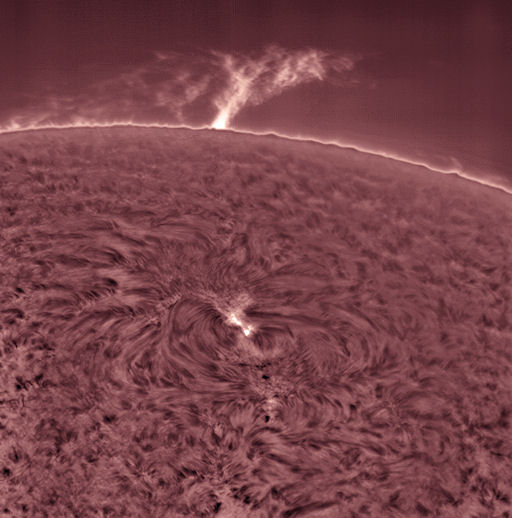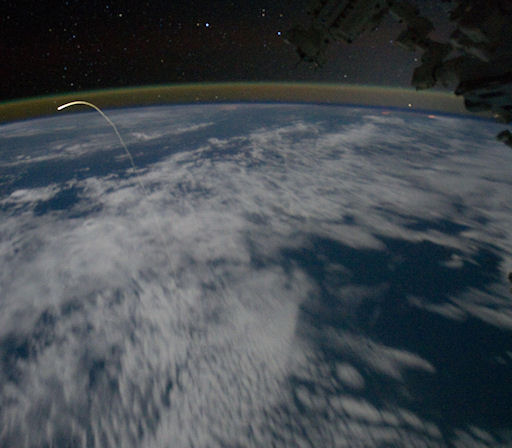Turn your cell phone into a field-tested satellite tracker. Works for Android and iPhone. | | |
SPACESHIP AT DAWN: The International Space Station is beginning a series of bright morning passes over North America. Check the Simple Satellite Tracker for flyby times, then set your alarm to see a spaceship at dawn. It's a nice way to start the day.
WESTERN PROM: The sun is growing quiet as all three Earrthside sunspots decay. Nevertheless, there is some action on the sun's western horizon. Rogerio Marcon sends this picture from his backyard observatory in Campinas SP Brasil:

"The remains of sunspot 1254 are visible in the foreground," says Marcon. "But what really caught my eye was the big prominence rising above the limb."
Prominences are clouds of plasma held aloft by solar magnetic fields. Current images from the Solar Dynamics Observatory suggest that this one could be unstable. Readers with solar telescopes are encouraged to monitor developments.
more images: from Peter Desypris of Syros, Greece; from Michael Borman of Evansville, Indiana; from Matt Wastell of Brisbane, Australia
LAST RE-ENTRY: On July 21st, the crew of the International Space Station photographed an event that will never be repeated: the re-entry of a space shuttle. Marking the end of NASA's 30-year shuttle program, Atlantis dove Earthward in a fiery arc that only six lucky space travelers could see from above:

The green band of light in the background is called "airglow." Airglow is a luminous bubble that surounds our entire planet, decorating the top of the atmosphere with aurora-like color. Although airglow resembles the aurora borealis, its underlying physics is different. Airglow is caused by an assortment of chemical reactions in the upper atmosphere driven mainly by solar ultraviolet radiation; auroras, on the other hand, are prompted by gusts of solar wind.
More pictures from the last flight of Atlantis may be found here.
2011 Noctilucent Cloud Gallery
[previous years: 2003, 2004, 2005, 2006, 2007, 2008, 2009]
June 2011 Aurora Gallery
[Aurora alerts: text, voice] [previous Junes: 2010, 2008, 2001]
Potentially Hazardous Asteroids (
PHAs) are space rocks larger than approximately 100m that can come closer to Earth than 0.05 AU. None of the known PHAs is on a collision course with our planet, although astronomers are finding
new ones all the time.
On July 24, 2011 there were 1237 potentially hazardous asteroids.
Notes: LD means "Lunar Distance." 1 LD = 384,401 km, the distance between Earth and the Moon. 1 LD also equals 0.00256 AU. MAG is the visual magnitude of the asteroid on the date of closest approach. | | The official U.S. government space weather bureau |
| | The first place to look for information about sundogs, pillars, rainbows and related phenomena. |
| | Researchers call it a "Hubble for the sun." SDO is the most advanced solar observatory ever. |
| | 3D views of the sun from NASA's Solar and Terrestrial Relations Observatory |
| | Realtime and archival images of the Sun from SOHO. |
| | from the NOAA Space Environment Center |
| | the underlying science of space weather |
| | for out-of-this-world printing and graphics |

